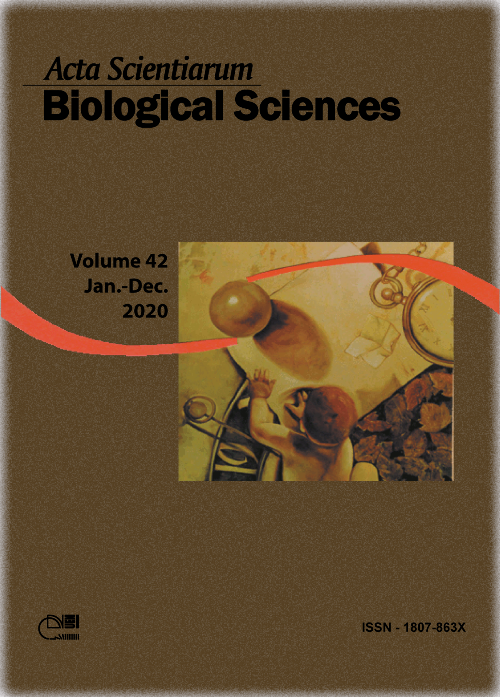Phytosociology in areas of the Brazilian Cerrado: Cerrado stricto sensu, municipality of Porto Nacional, State of Tocantins
Abstract
Phytosociological studies are essential for the elaboration of conservation strategies for the Cerrado. The goal of this study was to survey two areas of cerrado stricto sensu: Fazenda Canaã and Fazenda Providência, located in the Municipality of Porto Nacional, State of Tocantins. There were 10 plots of 100 m2 allocated in each area. All individuals with circumference equal to or greater than 10 cm, at ground height ≥10 cm were sampled, soil samples were taken for physical-chemical analysis. Sampling in Canaã resulted in 379 individuals belonging to 28 families and 50 species. In Providência, there were 300 individuals from 27 families and 49 species. The Shannon-Wiener Index for the Canaã was 3.48 and for Providência, 3.45. The studied areas presented a large number of small sized individuals, presenting a reverse J-shaped diameter structure. The Canonical Correspondence Analysis showed significant scores for the first axes (p < 0.05) according to the Monte Carlo test, which explained 70% total variability of the data. The variables with the highest structure coefficient in axis 1 were clay (0.94), pH (0.62) and magnesium (-0.32). On axis 2, the most important variables were aluminum (0.29), silt (0.25) and potassium (-0.078). These soil variables show a differentiation of the study areas.
Downloads
DECLARATION OF ORIGINALITY AND COPYRIGHTS
I Declare that current article is original and has not been submitted for publication, in part or in whole, to any other national or international journal.
The copyrights belong exclusively to the authors. Published content is licensed under Creative Commons Attribution 4.0 (CC BY 4.0) guidelines, which allows sharing (copy and distribution of the material in any medium or format) and adaptation (remix, transform, and build upon the material) for any purpose, even commercially, under the terms of attribution.
Read this link for further information on how to use CC BY 4.0 properly.












1.png)




3.png)













